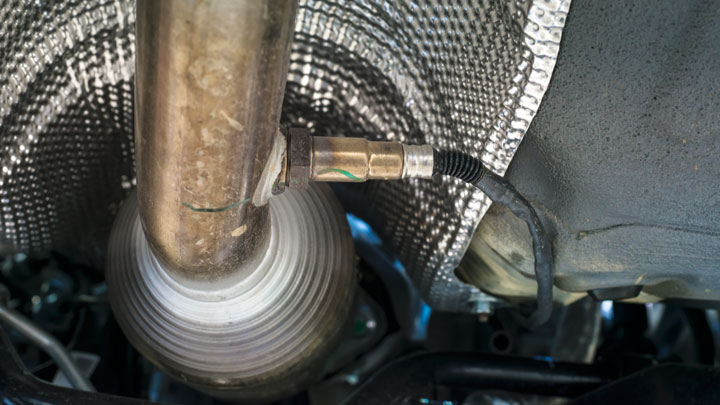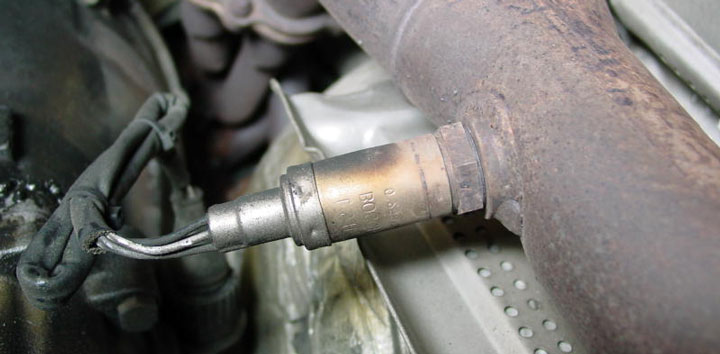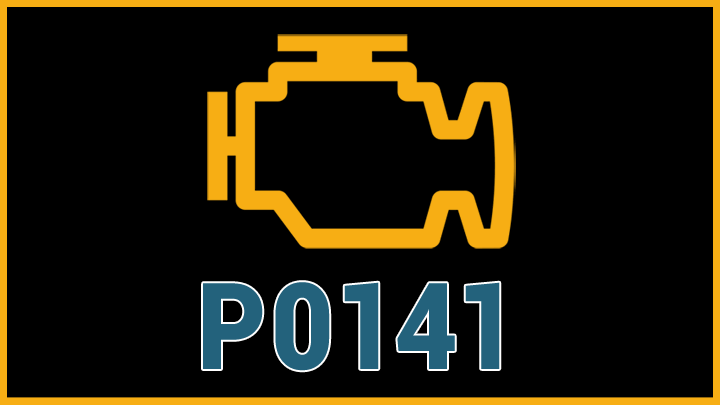Last Updated on July 13, 2022
When your car pops a check engine light, your heart skips a beat. But if you’ve got a P0141 code, you likely take a deep breath. That’s because a code P0141 is an emission code, and if you don’t have the money to fix it now, you can likely put it off for a while without any issues.
Even better, if you’re lucky, you can fix this pesky code without having to spend a dime! But what exactly is a P0141 code, and how can you fix it? We’ll break it all down in this comprehensive guide.
What Does Code P0141 Mean?
An O2 sensor heater circuit is referring to the circuit your vehicle’s oxygen sensor is running on. It’s telling you that the reading from that particular circuit is outside of a normal range.
While this can be because of an underlying issue in your catalytic converter, it can also be that that the oxygen sensor is sending faulty readings. A code P0141 doesn’t necessarily tell you the exact problem, but it gives you a great place to start looking.
Read Also: Code P0030, Code P0031, Code P0133, Code P0140, Code P0161
Symptoms of Code P0141

If you have a code P0141, you probably didn’t notice anything other than a check engine light. That’s because a P0141 is an emissions code, and unless you’re getting an emission test, you likely won’t notice anything at all.
Furthermore, if the cause is a faulty oxygen sensor, the only thing that will cause you to fail the emissions test is the code itself. That’s because all the oxygen sensor does is report current emission readings.
If the sensor is faulty, that doesn’t mean your emissions have skyrocketed; it just means your vehicle can’t tell if the current emissions are passable.
Even though a check engine light is the only real symptom of DTC P0141, two other signs may show if you happen to take your vehicle to the local DEQ or other emissions test center. Otherwise, you will likely notice nothing out of the ordinary while driving.
- A check engine light
- Failed emissions inspection
- Elevated NOx emissions
Causes of Code P0141

The most common cause by far of a P0141 code is a faulty oxygen sensor. Oxygen sensors typically only last between 60,000 to 90,000 miles before you need to replace them.
Meanwhile, the next likely component to fail, the catalytic converter typically lasts 100,000 miles, and it’s not uncommon for them to last close to 150,000 miles. Moreover, if the catalytic converter is the problem, you’ll likely have a rotten egg smell coming from the back of your vehicle.
However, if your oxygen sensors are still in good shape, there are a few other potential issues you should look into. Exhaust leaks before the oxygen sensors, a faulty catalytic converter, and wiring issues are common causes of a P0141 code.
- A faulty oxygen sensor
- A faulty catalytic converter
- Exhaust leaks before the rear oxygen sensor
- Faulty wiring or connections
See Also: Straight Pipe Exhaust (Pros and Cons)
Is Code P0141 Serious?
A P0141 code is among the least serious engine codes you can have. No matter the underlying issue, a P0141 code will never progress to a more serious engine issue.
However, the most significant concern in leaving a P0141 code unaddressed is that the check engine light will always stay on. While this might not be a big concern at first, if another underlying issue pops up that would turn on the check engine light, you have no way of knowing that more than one code is present.
Because of this, you always strive to fix all underlying check engine codes no matter how serious the current code is.
How to Fix

If you’re looking to fix a P0141 code, you’re in luck. That’s because 90 percent of the time, you can repair a P0141 code by replacing the oxygen sensors.
While oxygen sensors can range anywhere from $50 to $200+, they’re straightforward to replace. All you need is access to your exhaust system and the right sized wrench to get the job done. Even if you’re a novice mechanic with limited know-how, this is a job you can do.
If you’re in a pinch and trying to save a little money, you can pull the sensors and try to clean them. While this won’t always work, it could end up saving you a couple hundred dollars.
To clean the sensor, all you need to do is remove it and scrub it with a wire brush. Do not soak your oxygen sensors in gasoline or spray them with any aerosol products, as this can cause further damage to the sensors.
However, before you replace or clean any sensors, do yourself a favor and check for two things.
- First, listen to your car when you start it up. If it sounds like a hotrod when you drive a four-cylinder Honda (or something similar), you have an exhaust leak. Even if you drive a louder vehicle, an exhaust leak creates a distinct sound that sounds like a rumbling from the backside of your car. Fix the exhaust leak before you replace any sensors.
- Second, check to make sure that the oxygen sensor wiring is intact and that the sensor is plugged in. It might sound elementary, but it’s not uncommon for an oxygen sensor’s wires to corrode and show obvious signs of wear.
However, if everything is in good shape and the problem doesn’t go away after you replace the oxygen sensors, you probably need a new catalytic converter. A catalytic converter is a little more expensive, but they typically last between 70,000 and 130,000 miles.





Thanks for the straight forward easy to understand information. Will relay to my son so he can check out the 02 sensors, wires and exhaust leaks if any. Hopefully this will assist in him getting his work car running again.
Glad it helped you out!
Make sure you have good clean ground connections from engine to chassis and battery to chassis and engine